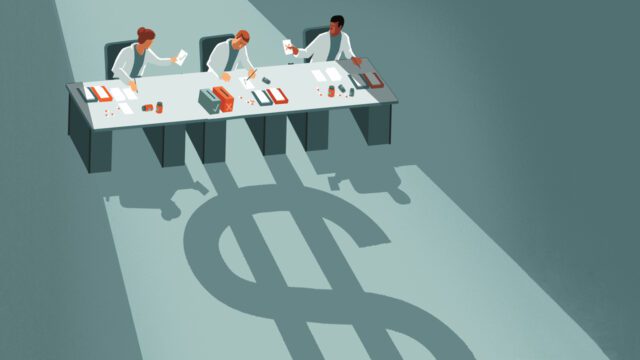
January 14, 2013
Big Pharma getting rich on US Defense Budget
By Mark Wachtler
January 14, 2013. (ONN) When Americans think about the corporations with obscenely high-paid CEO’s, gouging the American people and sending the nation into debt, they typically think of oil companies like Exxon or global banks like Goldman Sachs. But the highest paid CEO’s in the nation are from another industry – healthcare. And one small segment of the healthcare industry is profiting off the US military like no other – Big Pharma.
In 1970, the US spent $100 billion on national defense. By 2010, it had grown to $700 billion. That amount is 6-times more than the #2 country on the list and more than the top 17 nations combined. And taking a closer look at some of the larger cost centers, one sees that drugs are a $7 billion business to the US military and the taxpayers paying for it.
Cost of war in an addicted society
Big drug companies like to insist that the astronomical amount of drugs its sells to the US military are a part of its humble patriotic effort to help out the US in its war on terror. And it’s true that 10 straight years of war result in tens of thousands of wounded warriors in need of care and medication. But is that the whole reason drug companies are making billions off the Department of Defense or is there more?
The blunt and honest answer is, there’s more. Americans are a society in denial, in denial that we are a pill-popping, drug addicted nation. The proof is in the statistics. The US consumes 80% of the world’s entire supply of pain killers. And compared to the dismal living conditions in most of the world, Americans should consider themselves one of the most pain-free nations on Earth.
The dirty secret is that multinational drug companies have profited handsomely by getting Americans addicted to drugs. And the drugs that aren’t addictive, like cancer treatments, are simply produced by too few companies that shortages arise and prices jump. Drug companies could just increase production. But that would make costs come down, something these for-profit corporations don’t want. Some cancer treatments cost thousands of dollars per weekly shot.
And God forbid your baby is born premature. When drug giant Merck sold the rights to the drug Indocin to Ovation Pharma in 2006, it cost $100 per dose. Indocin repairs the holes in the hearts of tiny, premature babies in infant intensive care units across the country. Upon purchasing the drug from Merck, Ovation enacted 18 price increases over the following 2 years until the cost of one single treatment cost $1,800 – too much for many Americans to afford and insurance companies to cover.
The universal outrage was brought to light on the floor of the US Senate by Sen. Amy Klobuchar (D-MN) when she said, “And even though this is an American company, and this is what really gets outrageous, the price that Ovation charges for the life-saving drugs for babies is now 44-times higher in the United States than what they sell it for in Canada. Nothing can justify this kind of price disparity except that this company wants to bring in more money into the coffers.”
Drugs in the US military
In a first of its kind investigative report by the Austin Statesman two weeks ago, the paper details the surprisingly high drug costs emanating from America’s Defense budget. As they point out, ‘Last year the Pentagon spent more on pills, injections and vaccines than it did on Black Hawk helicopters, Abrams tanks, Hercules C-130 cargo planes and Patriot missiles combined.”
In 2009 and 2010, the US military spent more than $7 billion in each year on outpatient pharmacy sales alone. In 2011, that amount dropped slightly to $6.75 billion. Back in 2002, when the War on Terror began, the military spent only $3 billion annually on drugs.
Some of the drugs most widely prescribed to active and retired military personnel include antidepressants and heroin-based opioid painkillers such as Oxycontin and hydrocodone. Another popular prescription is for the sleeping pill Ambien and similar sleep aids.
What has America’s decade of war meant to global big pharma corporations? Profits, profits and more profits. As confirmed by the Dept of Defense, the largest recipient of DoD drug purchases in the 10 years since the War on Terror began is Pfizer, bringing in more than $8 billion. Abbott, while not reaching the heights of Pfizer, isn’t crying. Their sales to the US military increased 300% in the same time period. Novartis joined them, watching its drug sales to the military more than double to $400 million in 2011.
Drug sales to US military from 2002 – 2011 (from TRICARE Defense Logistics):
Lipitor – $1.3 billion
Plavix – $1.3 billion
Advair – $1.1 billion
Nexium – $983 million
Singulair – $973 million
Celebrex – $903 million
Zocor – $781 million
Prevacid – $670 million
Aciphex – $664 million
Actos – $613 million
Enbrel – $594 million
Effexor – $494 million
Fosamax – $481 million
Ambien – $417 million
Zyrtec – $413 million
According to the report, Dept. of Defense drug spending has jumped 123% since the War on Terror began in 2002, from $3 billion to $6.75 billion in 2011. But military officials insist the cost increase has little to do with the wars.
They point out that only 10% of the patients covered by the Dept of Defense and the VA are active duty military soldiers. It’s the 90% that are retired veterans driving the higher costs. Analysts also remind us that these numbers don’t even include mail-order prescriptions or other popular methods customers use to obtain their drugs. The actual drug sales and profits could actually be much higher.
Related Articles:
Merck Drug Crimes prove Occupy point
Whitney Houston – Another Big Pharma Victim?
Does Marijuana cure Cancer?
SUBSCRIBE
DONATE
Whiteout Press is a FREE independent News Service.
Support Indy-Media – Support Whiteout Press
Donate Here








